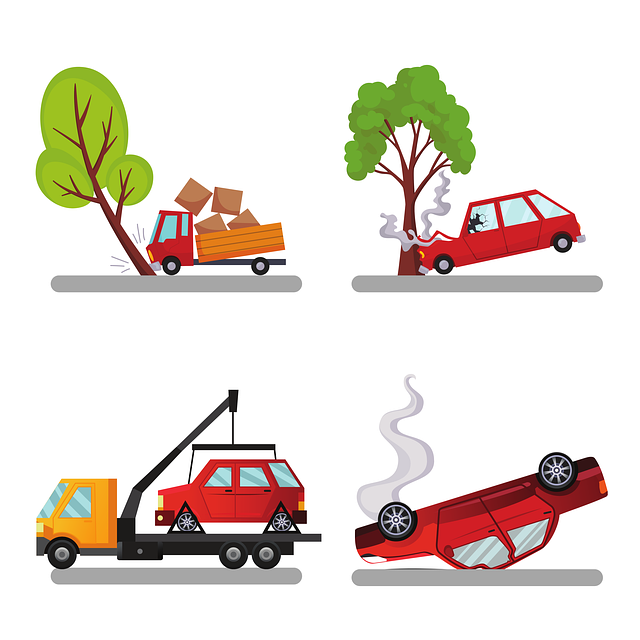TL;DR:
Understanding deductibles is crucial for managing auto insurance costs and accident repairs. Deductibles are out-of-pocket amounts after an accident, influencing financial burden and coverage. Higher deductibles lower premiums but require covering more repair costs, while lower deductibles ensure comprehensive coverage for valuable vehicles. Policyholders can choose repair shops or insurance-approved providers, balancing damage extent with deductible payment options. For minor repairs, specialized services might save costs; for extensive body work, comprehensive coverage or higher deductibles reduce out-of-pocket expenses. Informed decisions tailored to individual situations and car restoration needs are key.
After a car accident, understanding your deductible payment options is crucial. This article explores why these options matter and how they can impact your financial burden. We break down the effects of accidents on deductibles and guide you through navigating post-accident payment choices. From knowing your rights to exploring various options, this resource ensures you make informed decisions. Discover the importance of deductible payment options and gain control over your financial recovery process.
- Understanding Deductibles: What They Are and Why They Matter
- Impact of Auto Accidents on Deductible Payments
- Navigating Payment Options After an Accident: Your Rights and Choices
Understanding Deductibles: What They Are and Why They Matter

Understanding Deductibles: What They Are and Why They Matter
Deductibles are a crucial component of auto insurance policies, representing the amount an insured person agrees to pay out-of-pocket for repairs following an accident before their insurance coverage kicks in. This financial responsibility is significant as it directly impacts the overall cost of auto accidents, both for individuals and the insurance industry. By setting a deductible, insurers encourage policyholders to be more cautious drivers and thoughtful about their choices post-accident.
Choosing the right deductible payment options can be complex but essential. It requires balancing the desire to minimize financial burden with the need for adequate coverage. For instance, opt-in for higher deductibles if your vehicle is older or less valuable, as this could reduce premium costs. Conversely, for those owning a prized possession like a Mercedes Benz in need of meticulous repairs and auto painting, selecting a lower deductible ensures access to comprehensive coverage, encompassing even intricate vehicle bodywork services.
Impact of Auto Accidents on Deductible Payments

Auto accidents can significantly impact an individual’s financial situation, particularly when it comes to deductible payment options. The immediate effect is often a surge in out-of-pocket expenses, as policyholders are responsible for covering the deductible amount before insurance kicks in. This can be a substantial burden, especially if the accident results in extensive damage, such as requiring a vehicle body shop for repairs or car paint repair.
In light of these challenges, understanding deductible payment options becomes crucial. Many drivers opt for higher deductibles to potentially reduce premium costs, but this decision should be made with care. While it may lower monthly payments, a higher deductible means that in the event of an accident, the policyholder will need to cover a larger portion of the repair costs, which could include extensive auto body restoration if the damage is severe.
Navigating Payment Options After an Accident: Your Rights and Choices

After a car accident, navigating your insurance claim can be stressful, especially when considering your deductible payment options. Your choices here directly impact the financial burden and recovery process. It’s crucial to understand that as a policyholder, you have rights and various options to explore. These include the ability to select a repair shop independently or use an insurance-approved provider for vehicle repair services.
When deciding on deductibles, consider the extent of damage. For minor dents and cosmetic issues, opting for a specialized car dent repair service might be more cost-effective while keeping you within your deductible limits. However, for extensive body work, including structural repairs or multiple damaged areas, choosing comprehensive coverage or raising your deductible could result in significant savings on your out-of-pocket expenses. Balancing these options ensures that you make informed decisions tailored to your situation and the scope of required car body restoration.
After an auto accident, understanding your deductible payment options is crucial. Knowing how accidents impact deductibles and navigating your rights and choices can help you make informed decisions. By familiarizing yourself with these aspects, you can actively manage your financial burden and ensure a smoother process during the recovery period. Remember, being proactive regarding deductible payment options is a key step in effectively managing the aftermath of an accident.














